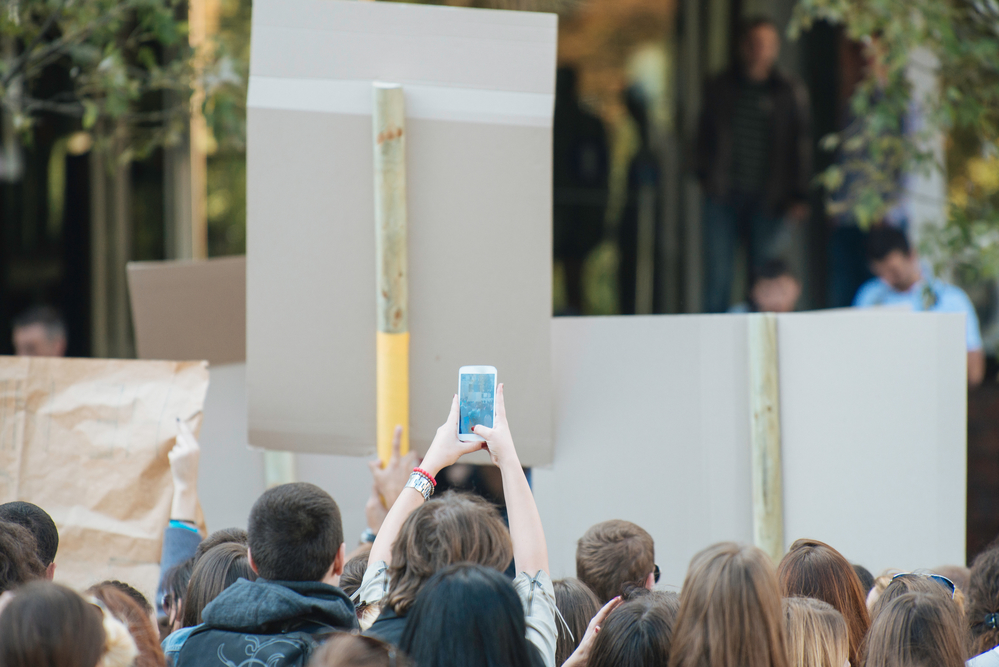Wrangling Radicals: Intersectionality and Campus Culture
By Arnold Kling


- The college-aged activist of modern times is radically exclusionary and often views the principles of open debate with skepticism, if not outright hostility. Indeed, many young people interviewed for this book thought speech that offends them should be illegal, or was already illegal.
- —Robby Soave, Panic Attack: Young Radicals in the Age of Trump1
Robby Soave is a young, libertarian-leaning journalist who spent over a year studying the campus radical movement. The portrait that results is highly disturbing. He sees young people shaped by the theory of intersectionality,
- that has grown to dominate the academy, particularly the humanities and social sciences. This theory does not compromise, makes little room for healthy disagreement, and it has nothing but scorn for the not yet converted.
Soave explains,
- intersectionality means that various kinds of oppression—racism, sexism, homophobia, transphobia, economic inequality, and others—are simultaneously distinct from each other and inherently linked… they are all forms of oppression that should be opposed with equal fervor. For instance, a feminist who isn’t sufficiently worked up about the rights of the gay and transgender communities is at odds with the tenets of intersectionality. She is a feminist, but she is not an intersectional feminist.
Intersectionality is a single theory that, to its adherents, explains everything. Oppression is everywhere, and the Manichean fight against oppression is all-encompassing. If free speech permits speakers to hurt the feelings of oppressed categories of individuals, then free speech is a tool of oppression that cannot be tolerated.
Soave cites an estimate by The New Republic that at least one hundred higher education institutions have “bias-response teams,” which respond to complaints about hurtful speech, known as “microaggressions.” The bias-response teams can act like a secret police, creating an Orwellian atmosphere on campus. The justification for these policies appears to be thin. Soave notes that
- In 2017, the Cato Institute surveyed people of color and asked whether they were offended by various examples taken from a list of possible microaggressions. Sure enough, in nearly all cases, a majority of respondents who ought to have felt victimized said that they were not.
The power of intersectionality is the ability it gives its adherents to dismiss disagreement, and even to shut it down. That is because disagreement can be characterized as a form of oppression, making it illegitimate.
But the totalitarian nature of intersectionality is also a weakness. Its adherents insist that every position that they take is correct and must be held. No matter how much you may agree with intersectional activists on, say, race and gender issues, if you do not also agree that capitalism is evil or that Israel is an apartheid state, you cannot be included in the intersectional cadre. Intersectionality is a purist ideology, not a coalition-building movement. Soave concludes,
- the intersectionality-driven leftist war on moderation and cross-ideological coalitions makes alliance-building harder. This infighting is a gift to [President] Trump and those who continue to support him.
- … they are counterproductive, turning away far more people than they convert. They force progressive activists to battle each other, since the most marginalized person is awarded the most power in any dispute… Consider this conclusion a friendly appeal to dial down the performative social signaling, insistence on ideological purity, and embrace of the worst aspects of identity politics. If the left does this—makes peace with liberals… it can win. My concern is that something akin to the nightmare scenario will unfold: Zillenial leftists will become more radical and the far right more emboldened while the rest of us shrug and give up.
I would speculate that young people are turning to intersectionality in part because a totalitarian ideology is appealing at a time of cultural stress. I believe that the cultural stress comes from the ubiquitous media environment created by cable television news, smart phones, the Internet, and social media.
Technology has erased what used to be a boundary between personal space and public space. Your friends used to be available in person, while public figures used to be distant and usually out of view, accessed when you read a newspaper or watched the evening news on television. Now, both your friends and the President of the United States can be found on apps on your phone. The felt need to respond to both reflects emotional triggers that were never experienced by earlier generations.
The 1930s also were a stressful time, and radio technology also coincided with strong totalitarian impulses in many societies. I hope that today’s totalitarian ideology ultimately gives way to better solutions for coping with our current media environment.
Footnotes
[1] Robby Soave, Panic Attack: Young Radicals in the Age of Trump. All Points Books, 2019.
*Arnold Kling has a Ph.D. in economics from the Massachusetts Institute of Technology. He is the author of several books, including Crisis of Abundance: Rethinking How We Pay for Health Care; Invisible Wealth: The Hidden Story of How Markets Work; Unchecked and Unbalanced: How the Discrepancy Between Knowledge and Power Caused the Financial Crisis and Threatens Democracy; and Specialization and Trade: A Re-introduction to Economics. He contributed to EconLog from January 2003 through August 2012.
Read more of what Arnold Kling’s been reading. For more book reviews and articles by Arnold Kling, see the Archive.
